Robert E. Lee intended to take the fight into Union territory, hoping to take Washington, D.C.
But the loss of a pair of his orders, which had been found by Union privates, led to his plans being revealed.
As a result, the nearby Antietam Creek at Sharpsburg was about to become the site of the bloodiest day in American history.
Preparation and Strategy
After encountering stiff Union resistance at the base of South Mountain, Lee realized he needed to move his men to better terrain.
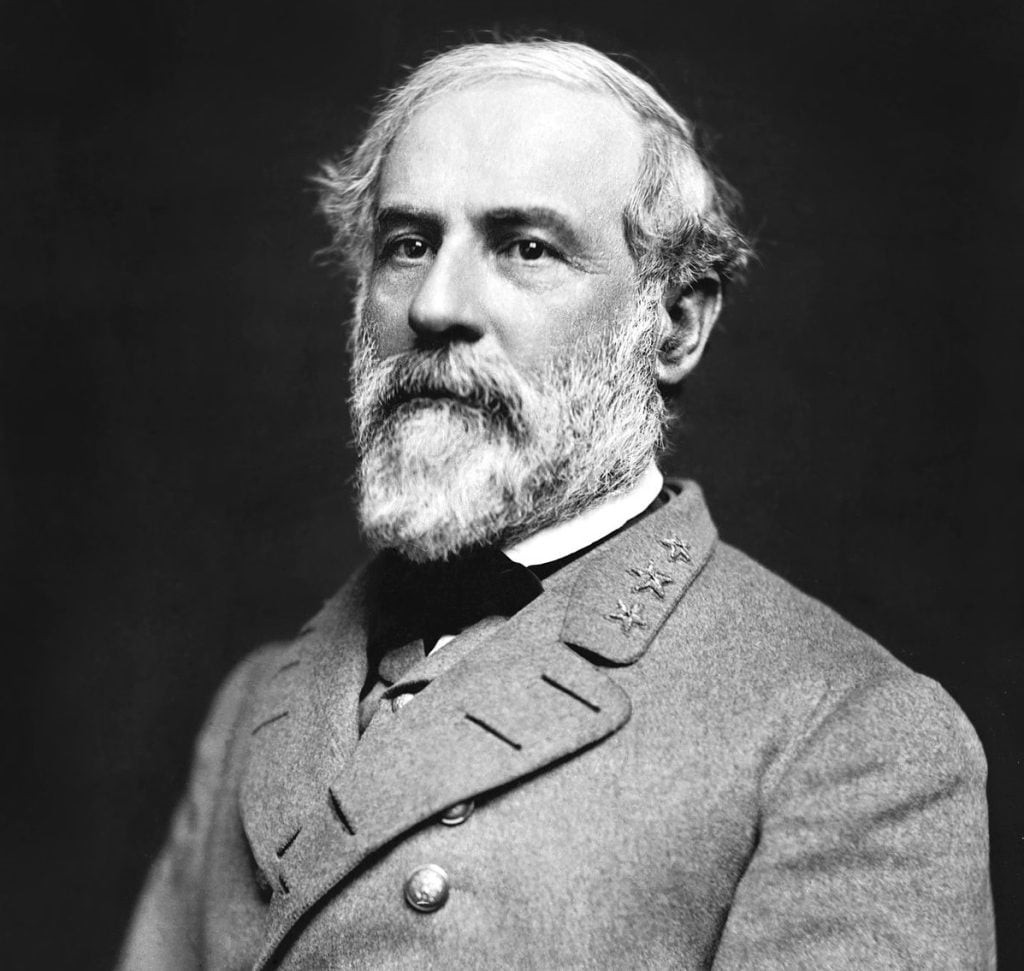
The catch? Many of his men had nothing to eat but apples and corn for roughly a week and were incapacitated with diarrhea, exhaustion, and other illness — a poor way to start a battle.
Meanwhile, Union General George McClellan was on the move. He outnumbered Lee 2-to-1, though McClellan didn’t know that.
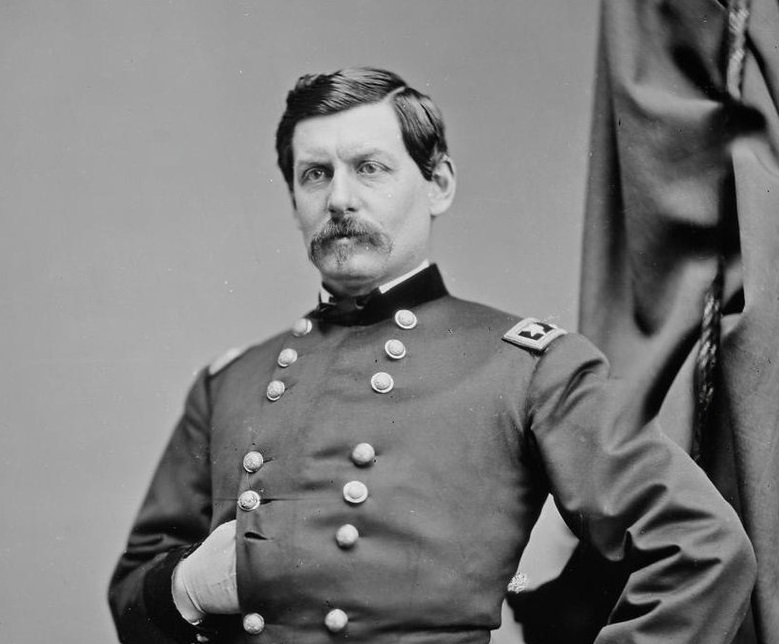
The fog of war led him to believe that Lee’s forces were on par with his.
Because of this misconception, McClellan only committed a part of his forces to the battle. And on September 17, 1862, the battle began.
A Clash of Countrymen
The fighting largely took place in a 40-acre cornfield.
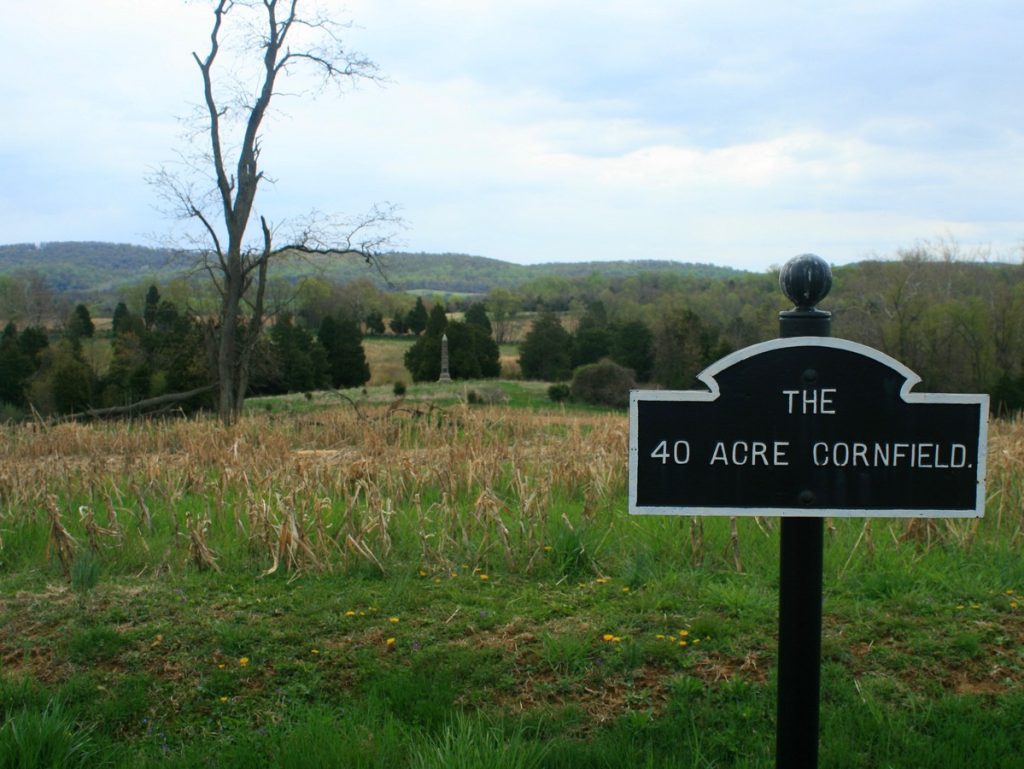
Within the first eight hours of fighting, there were already 15,000 casualties. Bullets flew so thick through the air that every stalk of corn was mowed to the ground by lead.
The Union knew they would need to take the nearby bridge to cross Antietam Creek. Ambrose Burnside was sent to do the job.
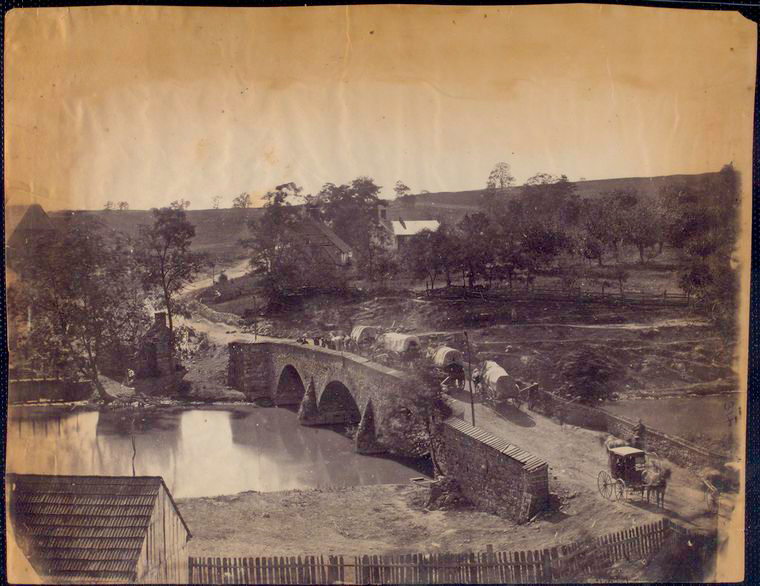
Five hundred Georgian sharpshooters turned away all who attempted passage at the bridge, but they ran out of ammunition. So, Burnside led a devastating 8,000-man bayonet charge through the area, routing the Confederates.
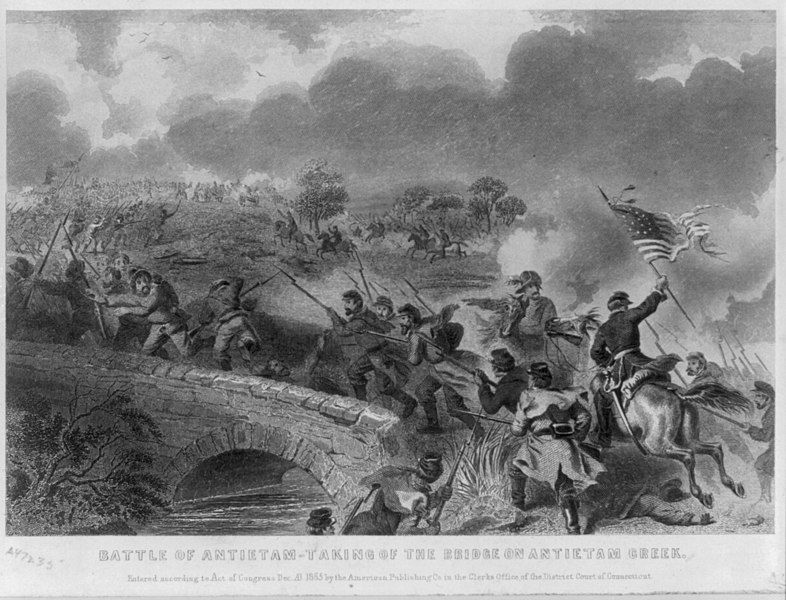
Burnside was about to roll into the Confederate flank when he was suddenly fired upon by a large group of men in blue — Confederate relief forces just in from Harpers Ferry, wearing Union uniforms. This saved the Confederate flank, stopping Burnside in his tracks.
But despite this halt to the Union advance, eventually, Lee’s men became too shattered to continue.
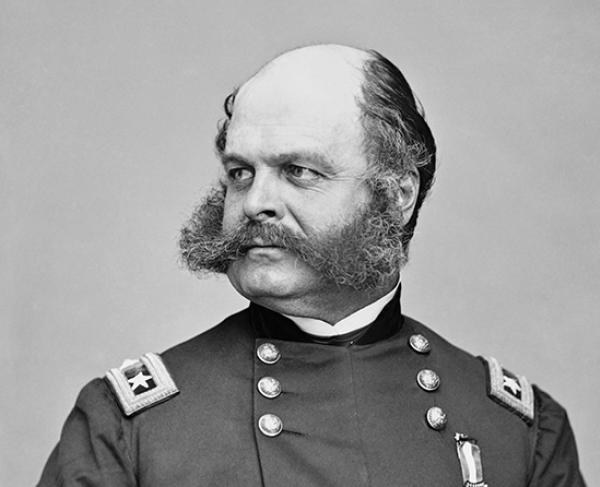
The Union soldiers were too many and too well-equipped. Lee withdrew, but fearing that Lee was preparing to attack once more, General Burnside failed to pursue Lee.
Had he done so, he likely could have ended the Civil War right then and there. Instead, Lee was able to escape, and the Civil War continued.
A Pyrrhic Victory
Despite taking more losses, the Union secured a victory that marked a major turning point in the war.
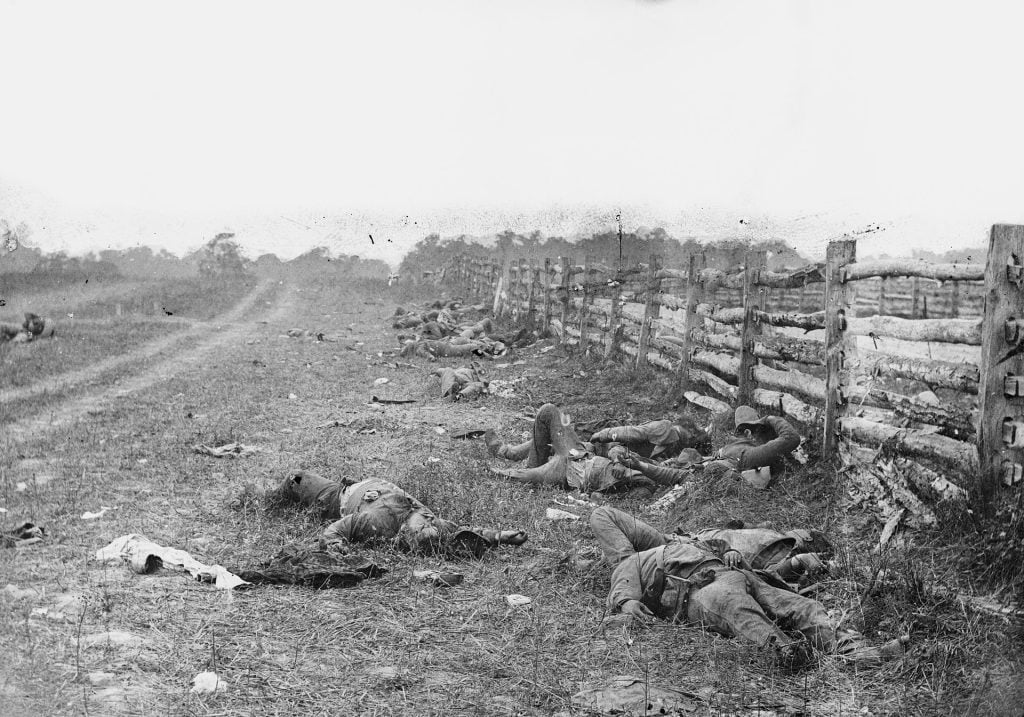
But it came at a great cost — the bloodiest day in American history.
By the time the shooting had stopped, the Union had suffered over 12,000 casualties, with the Confederates suffering over 10,000. The dead number 3,600; the wounded, more than 17,000.
You can read more about Antietam in Stephen Sears’ Landscape Turned Red.
This is a new style of article for Pew Pew Tactical, if you liked it — let us know in the comments! If you didn’t enjoy it…well phooey. To catch up on previous Pictures from History, click on over to our History Category.

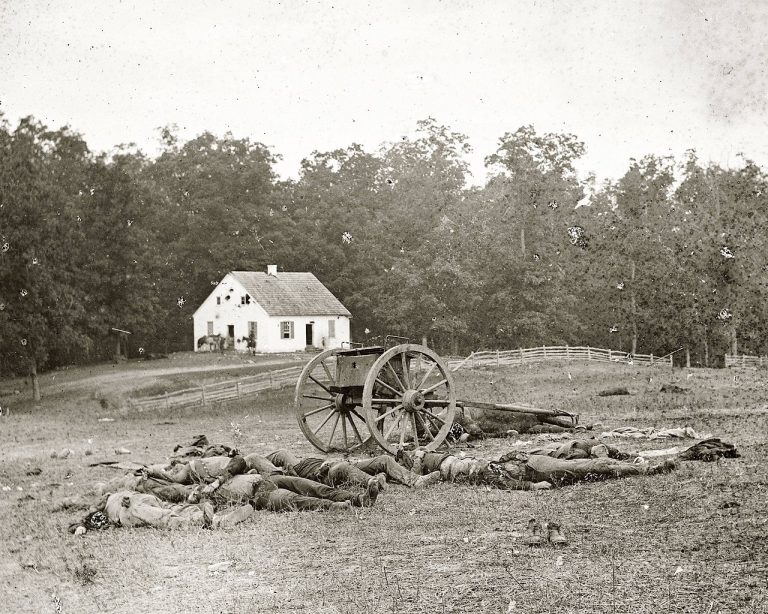
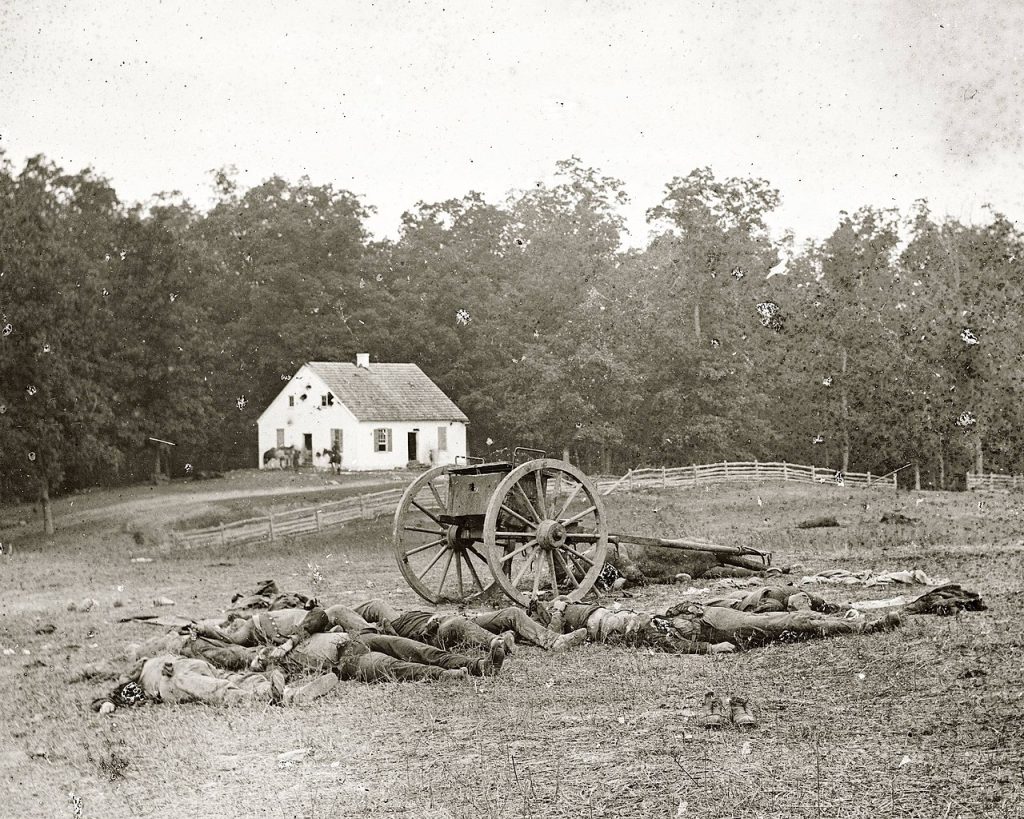







12 Leave a Reply
Great short summary of this monumental American event of bravery and sacrifice.
Thanks. I like the shrt threads on civil war history.
Thank you for this. Dunker Church was a makeshift trauma center and limbs were piled up outside the window from the amputations. Gruesome.
It's difficult, when analyzing the many battles of the Civil War, and to place a numerical value as to their importance in the eventual outcome of the war. Historically though, Antietam, along with Gettysburg stand out. Both were high in casualties, but Antietam occurred over a single day, and Gettysburg over 3 days. Both battles shortened the war eventually, yet both could have have ended or severely shortened the war but for the failure of two Generals who were overcautious. McClelland at Antietam, and Meade at Gettysburg. We can understand Lincoln's frustration and anger with both men for their failure to seize the initiative obviously available. Lee's capture or death would have been a blow from which the South would not be able to recover.
Both, also show a problem the South had from the very beginning of the war, and that only worsened as the war drug on. That was Supply and Logistics. The South, in spite of their more agrarian society, could never feed their army consistently. They also never had the Industrial capacity to clothe and arm their army. A secondary goal of Lee's incursions into the North, was to hopefully seize supplies.
Good synopsis Aden, of the Bloodiest Day in US History. We read of more than 3,600 Dead and over 17,000 wounded, but in the end nearly half of those 17,000 would succumb to their wounds from the primitive Medical Care of the era.
Good stuff. History lessons are essential.
I remain a fan of this war, others too, so the article was very appreciated and I hope for more.
I enjoyed the article! What many people aren’t aware of—is at about 1400, on the same day as Antietam, in Lawrenceville Borough of Pittsburgh, PA a tragedy occurred. The girls had just been paid. This tragedy is considered the worst loss of civilian life during the War. Seventy-eight, mostly girls aged 13-19, eventually died due to a black powder explosion at the Allegheny Arsenal. Newspapers of the day were graphic in their description of the horror. . Many girls were never identified and are buried in a mass grave inside Allegheny Cemetery. Controversy surrounded the explosion. And the young people gave their life for a cause they believed in the same as the combatants at Antietam.
Indeed. The Largest Industrial Disaster of thar period. Amazing really, that only 78 lost their lives, as the Allegheny Arsenal employed somewhere around 1200 civilians at that time.
A few of the 78, were recognized only by the body parts discovered as rescuers looked for victims.
You're very right though, that not many are aware of the Arsenal's explosion on the very same day as the battle.
I agree. It could have been much worse. At the same time there were safety measures in place that appear to have been overlooked. It's not lost on many that on the same day as one of the costliest battles of the war was also the deadliest loss of civilian life. Working at the Arsenal was a family affair for some...even some of those who worked at the complex lost a child. Alexander McBride, the civilian supervisor of the Laboratory lost his daughter Kate. Michael Neckerman, a chief mechanic at the Arsenal, lost his 17 year old daughter Fredalina and Laura Guinn lost her sister Maria. A brother of my 2nd Great-Grandmother was a soldier at the battle at Antietam. Just happens that my wife was born and raised in Pittsburgh and we both took active interests in the battle and Arsenal explosion. With all the actors/actresses that come from Pittsburgh and movies made there.... I've never found a movie, dramatization, or documentary, (other than a short YouTube) of the Arsenal explosion and loss of life.
Keep them coming.
FYI, the official name for the conflict determined by Congress after the war, is “The War Between the States.” It wasn’t a “civil war” which is when two parties are fighting to control the other and the property and land. The South wasn’t fighting to take over the North. The South simply wanted to be left alone to govern itself.
Great article! Keep doing this.
Great feature! Keep 'em coming.